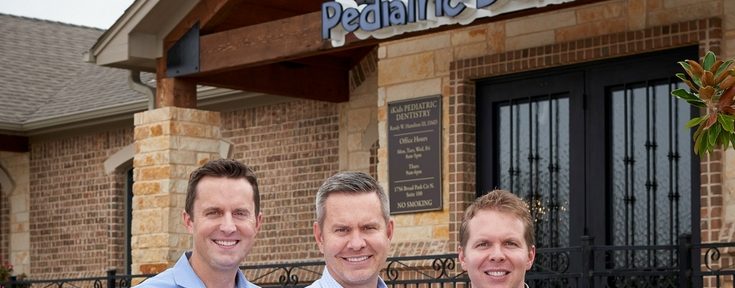The first iKids Pediatric Dentistry location opened in Mansfield, Texas, in 2010. Since then, CEO and founder Randy Hamilton, DMD has added 11 locations (and two of his brothers as partners!) to his operation, and he doesn’t have any intentions of slowing down. Growing from one location to 12 has taught him a lot about how to expand his footprint and business model. Of course, each practice’s journey is different, but having a good support and management team is essential no matter what your goals are. Whether you’re a single practice looking to add a second location, or a group practice seeking continued expansion, here are 3 steps Dr. Randy Hamilton feels are essential to structuring your business for successful and sustainable growth.
1. Centralize Training and Team Building
“As we grew, I knew around three to four offices that we needed to centralize our management team,” Hamilton said. “There were a lot of business functions – the un-fun stuff, I call it – that were still taking place in the offices and it was making it more difficult to train everyone and get everyone together.”
Training is particularly important to Hamilton, who together with his brothers has implemented a special program to align all his team members in providing the ultimate customer service experience. This accredited training program, called the NEDAC Institute, was inspired by and developed in conjunction with the famed Disney University. Providing intensive training for all staff members helped lift some of the pressure on Hamilton to visit each office and ensure things were functioning according to plan.
“Growing from 9 to 10 offices was a milestone because you’re working with so many different things at that point.” Hamilton said. “The number of personnel you have, how many doctors you need, where you’re recruiting doctors who buy in to your expectations and your vision – there’s a lot of factors. I started traveling the country doing lectures on customer service and what iKids stands for, so that we could reach doctors and inspire them to be part of our mission.”
2. Build Relationships With Key Partners
“I have a developer I work with all the time. I have a commercial real estate agent that I have known for a very long time that understands our vision and our philosophy,” Hamilton said. “That has been so helpful. When our commercial real estate agent finds a property we might be interested in, he writes his own letter to the owner saying, ‘Let me first explain who iKids is and what they represent.’ By the time he brings the opportunity to us, the owner of the building doesn’t want to sell to anyone else.”
Hamilton acknowledges that it wasn’t so easy in the beginning. Building relationships with trustworthy business partners helps in a number of ways, not the least of which is by relieving pressure on the dental team to have intimate knowledge of the inner workings of real estate development.
The same is true of working with banks. Once your relationships with banks are established and they know what you stand for, it makes it easier to continue adding locations and growing your practice.
“As we’ve grown and banks have seen what we are doing, they’re all in as well,” Hamilton said. “It’s all a cohesive team and when we are ready to open up a new office, it is one phone call and everyone is on board and it’s such a smooth process now compared to how it was with the first six or seven offices.”
3. Add “Corporate” Roles
“I use the word ‘corporate’ very lightly, because we are a privately owned establishment and we do not consider ourselves corporate by any stretch of the imagination,” Hamilton said. “We are privately owned and family-oriented but we do have a corporate office, so to speak. We have a COO and a CFO. We have a director of compliance whose sole role is to perform in-house audits of the offices to ensure everything at iKids is done right. We have a finance manager whose sole role is to manage a team that takes care of billing and collections.”
Often, Hamilton said, the need for a “corporate” role becomes evident when whoever was performing the role can no longer balance the work for an individual location and the large group practice. For instance, the responsibilities for managing supplies and office workflows across locations was also an office manager. When the work got to be too much, that role was moved to a “corporate” level and an office manager was added.
“When we get large enough that someone else can’t hold on to both of those roles, that’s when you know to break that role out,” Hamilton said, “And then, as we continue to grow, we have weekly meetings where we tie all these people in so we have visibility into how things are working.”
This article originally appeared in the Winter 2018 issue of Best Practice Magazine. For more great Best Practice content, make sure you’re on our mailing list by visiting this page and clicking “request publications.”
If you’d like more suggestions on how to perform as a unified team when you have more than one location, take a look at this blog post. And for Patterson’s complete listing of products and services to help your group practice thrive, stop by our website! What have been some of the biggest trials and triumphs throughout your practice’s process of growing to more than location? Feel free to share both tips and troubles in the comments below!









You must be logged in to post a comment.